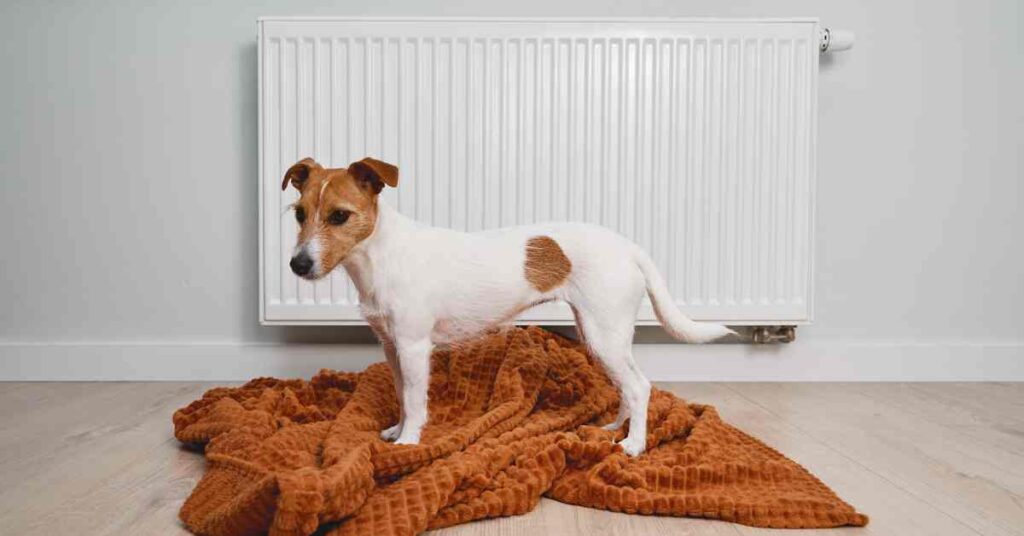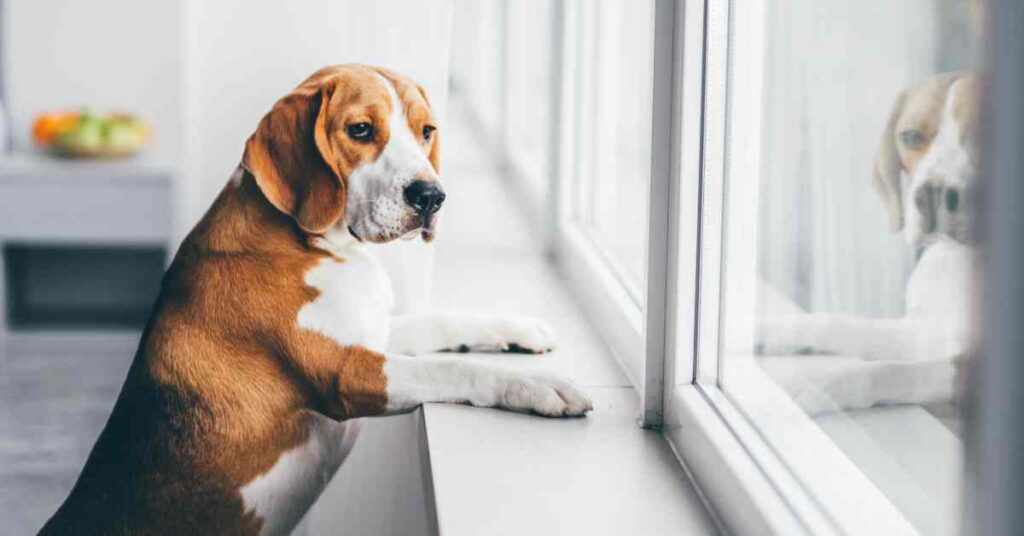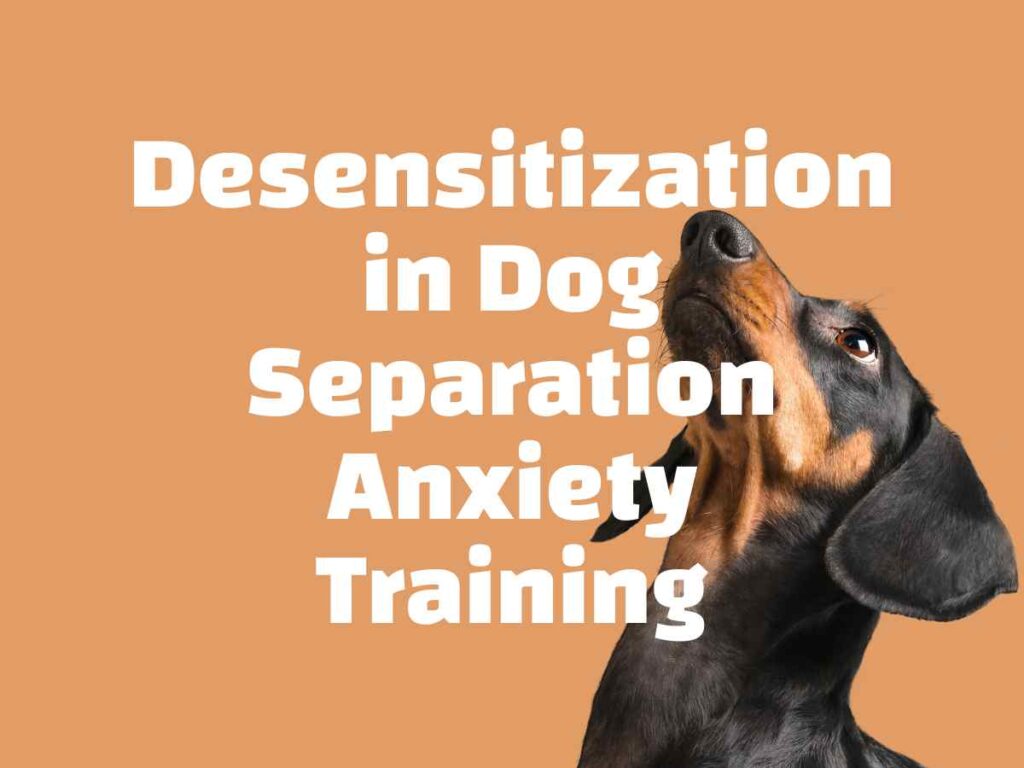Desensitization – Helping Your Anxious Dog Feel at Ease When Home Alone
Desensitization in dog separation anxiety training is the gold standard to helping dogs learn to cope with being alone. Desensitization involves gradually exposing the dog to the trigger of being left alone, incrementally increasing how much the dog can tolerate being on their own This process actually changes the dog's emotional response to the owner's departure, making it less stressful for the dog, and works far better than using food toys.
In this article, we will explore how desensitization works and how it can be used to train dogs with separation anxiety, that being on their own needn't be terrifying! We will also discuss the key components of a behavior modification plan to resolve separation anxiety, including management, medical consultation, systematic departures, and desensitization. Finally, we will provide tips on how to cover the basics of desensitization, when to consult a professional, and what to expect during the training process
If you're seeking immediate assistance for your dog's separation anxiety, feel free to reach out or visit the Work With Me page to book an appointment online. You can also learn more about me and my qualifications on the about me page.

What is desensitzation in dog behavior modification?
Systematic desensitization, a gentle and effective behavioral technique, is used to address anxiety disorders, such as separation anxiety in dogs. This approach entails a gradual and incremental exposure to the feared trigger (your departure), allowing your dog to develop tolerance and overcome their anxiety.
Desensitization aims to modify an individual's emotional response to a stimulus, reducing its stress or anxiety-inducing effect. This technique proves highly effective in addressing learned anxiety associated with specific objects or situations, such as phobias.
How Does Desensitization Help Dogs Cope On Their Own?
Desensitization involves gradually exposing an anxious dog to triggers in a controlled way to decrease their reaction and make them less sensitive to them.
By starting with very small separations and using positive reinforcement, the dog learns being alone is safe. With progressive practice, tolerance builds until they remain relaxed when left for longer periods.
Systematic Desensitization Steps
Here is a rough overview of how the desensitization process might look:
- Start by just stepping outside the door for 2 seconds and return.
- Slowly increase duration of departures by a few seconds each session, building up to 1-2 minutes. Vary your movements and make the durations in the session unpredictable to discourage your dog from anticipating how long you will be.
- Begin short departures while your dog stays home alone with a pet camera for monitoring.
- Vary departure and return times so it’s unpredictable. Work up to 30-60 minute solo absences.
- Maintain the desensitization routine consistently. Gradually extend time on this own but avoid overwhelming them. Slow is actually faster!
- When comfortable home alone up to 4 hours, build on reliability.
Helpful Tips for desensitization
Here are some pointers to help make desensitization effective:
- Remain emotionally neutral when leaving and returning. Don’t make a big fuss or use a baby voice. Act like everything’s normal, you coming and going should be no big deal
- Provide plenty of exercise beforehand so your dog is tired and calm.
- Use an Adaptil pheromone collar or plug in if you feel it helps to lessen anxiety.
- Consider hiring a pet sitter to check on your dog if alone over 4 hours – dogs are social creatures after all.
- Set up a safe, quiet den with favorite toys and bedding to make the space comforting.
- Try music or dog playlists to make your dog feel secure.
- Use remote cameras to monitor for signs of stress and ensure safety.
- Seek guidance from a certified separation anxiety trainer or behaviorist if needed.
With consistent work, your anxious dog can learn to become more self-assured and relaxed when you step out. Just take separation training gradually and make alone time fun and rewarding. Soon your dog will be ready to settle in happily when you head out the door for awhile. With the right approach, dogs can overcome separation stress and live worry-free.

What is Separation Anxiety in Dogs?
Understanding separation anxiety in dogs
Separation anxiety is a condition that affects dogs when they are separated from their owners or family members. It is a behavioral problem that can cause dogs to feel extreme distress, leading to destructive behavior and excessive vocalization. Dogs with separation anxiety often exhibit signs of anxiety and panic when they are left alone.
Symptoms of separation anxiety in dogs
Dogs with separation anxiety may display a variety of symptoms, including excessive barking or howling, destructive chewing, digging, urinating or defecating in the house, pacing, and attempting to escape or break out of the house. These behaviors are a result of the dog's anxiety and should not be mistaken for deliberate misbehavior.
Learn more in my article on signs and symptoms of dog separation anxiety.
How does separation anxiety affect your dog?
Separation anxiety can have a negative impact on your dog's overall well-being. It can cause physical symptoms such as loss of appetite, weight loss, and digestive issues. It can also lead to emotional distress, which can result in depression and behavioral problems. Dogs with separation anxiety are often unable to relax and may constantly be on high alert, waiting for their owners to return.
How to Recognize if Your Dog Has Separation Anxiety?
Signs that your dog may have separation anxiety
Recognizing the signs of separation anxiety is crucial in helping your dog overcome this condition. Some common signs include excessive barking, destructive behavior, restlessness, pacing or circling, attempts to escape, and urinating or defecating in the house when left alone.
Common triggers for separation anxiety in dogs
There are several factors that can contribute to the development of separation anxiety in dogs. Some common triggers include changes in routine or environment, being abandoned or rehomed, traumatic experiences, or a history of being left alone for long periods of time without proper preparation.
How to know if your dog has separation anxiety?
If you suspect that your dog may have separation anxiety, it is important to consult with a professional dog trainer or behaviorist. They can evaluate your dog's behavior and provide guidance on how to address the issue effectively. They will be able to determine whether your dog's behavior is indeed separation anxiety or if there could be other underlying factors causing the distress.

Creating a Training Plan for Your Dog with Separation Anxiety
Consulting a professional dog trainer
A professional dog trainer or behaviorist can be an invaluable resource in creating a training plan for your dog with separation anxiety. They have the knowledge and experience to assess your dog's behavior and design a customized training program that suits their individual needs.
Designing a personalized training plan
Once you have consulted with a professional, they will work with you to design a personalized training plan for your dog. This plan may include a combination of desensitization and counter-conditioning techniques to help your dog overcome their separation anxiety.
Setting goals and expectations
It is important to set realistic goals and expectations when training your dog with separation anxiety. Understand that overcoming separation anxiety is a gradual process and it may take time for your dog to fully adjust to being alone. Celebrate small victories along the way and be patient with your furry friend.
Using Desensitization in Separation Anxiety Training
Understanding desensitization and its benefits
Desensitization is a technique used in dog training to gradually expose your dog to the things that trigger their anxiety in a controlled and non-threatening manner. The goal is to reduce your dog's sensitivity to these triggers over time, allowing them to become more comfortable and less anxious when faced with them.
Incorporating desensitization techniques in training sessions
During desensitization training sessions, you will gradually expose your dog to anxiety triggers in a controlled environment. Start with low-intensity triggers and gradually increase the level of difficulty as your dog becomes more comfortable. This could include practicing short separations, using crates or confinement areas, and working on relaxation exercises.
Gradually increasing exposure to anxiety triggers
The key to successful desensitization is to start small and progress at a pace that is comfortable for your dog. As your dog becomes more relaxed and confident, gradually increase the duration and intensity of the anxiety triggers. This can help them build resilience and learn to cope with being alone.
Counter-conditioning to Treat Separation Anxiety
What is counter-conditioning and how does it work?
Counter-conditioning is another technique that can be is sometimes used to treat separation anxiety in dogs. The aim is to change your dog's emotional response to anxiety-inducing situations by pairing them with positive experiences and rewards. This helps to create a positive association and reduces their anxiety. As a CSAT I have not found that filling up a Kong, or using food based counter conditioning works as well for the absence part of isolation distress/separation anxiety as gradual desensitisation, however I would use counter conditioning to teach confinement, so, it's complicated!
Pairing positive experiences with anxiety-inducing situations
During counter-conditioning, you will gradually expose your dog to the triggers that usually cause anxiety while providing them with positive experiences, typically a crate or confinement area of that's what you feel you need to be using when teaching your dog to be home alone. This can include giving them their favorite treats, chews or toys, engaging in fun activities, or providing them with calming massage or music. The goal is to create positive associations and help your dog feel more relaxed and at ease in these situations.
Implementing a systematic desensitization and counter-conditioning plan
A systematic approach combining desensitization and counter-conditioning can be highly effective in treating separation anxiety in dogs. This involves creating a step-by-step plan to gradually expose your dog to anxiety triggers while providing positive reinforcements. With consistent training and patience, your dog can learn to relax and feel more secure when you are not around.
What is desensitization in dog behavior modifciation training?
Desensitization is a gradual process of exposing your dog to the triggers of their anxiety in controlled and manageable situations to help them become more comfortable and less reactive over time.
How can desensitization help my dog with separation anxiety?
Desensitization can help your dog by gradually teaching them to become more comfortable with being alone and reducing their anxiety when separated from you or other family members.
Can desensitization training work for all dogs with separation anxiety?
Yes, desensitization training can be highly effective for many dogs with separation anxiety, but severe cases may require additional professional help from a CSAT and pharmacological intervention.
How long does it take to desensitize a dog with separation anxiety?
The duration for the next training varies depending on the individual dog and the severity of their anxiety. It's important to be patient and consistent throughout the process, and nto try and rush it it or let them cry it out.
What are some techniques to desensitize my dog to being alone?
Start small – for some dogs that might just be you poppping in and out of the room, ofr others, it will be going to take the rubbish out, or popping to your car, every dog is individual and need to be treated as sucs. Some techniques include gradually increasing the time your dog is left alone, creating positive associations with being alone, and providing interactive toys or puzzles for mental stimulation.
Can crate training help in desensitizing a dog with separation anxiety?
Yes, crate training can be a useful tool in desensitizing your dog to being alone, if done in the right way. A crate can provide a safe and secure environment for them while you are away.
Why is desensitization important in helping dogs with separation anxiety?
Desensitization is important because it literlally makes dogs ‘less sensitive' to the thing they are worried about – being alone. Desensitization helps dogs suffering from separation anxiety to gradually build confidence and reduce their fear of being left alone, leading to a more relaxed and comfortable state of mind.
How can I tell if my dog has separation anxiety?
Some signs of separation anxiety in dogs include destructive behavior when left alone, excessive barking or howling, and displaying distress or agitation when anticipating being left alone.
What are the benefits of desensitizing my dog to separation anxiety?
Quite simply – you get your life back and you can go out without them! For your dog, the benefits of desensitizing them to absences include reducing their anxiety, preventing destructive behavior, and enabling them to relax and cope better with being alone.
Can desensitization training be done without professional help?
Yes, but professional help is always going to be useful for that second pair of eyes and expert support. While desensitization training can be done by dog owners, severe cases of separation anxiety may require the expertise of a certified separation anxiety trainer to provide the necessary support and guidance.





